JRDG Company Special – Model 1
1988-1994
Retail Price approximately 5000 euro
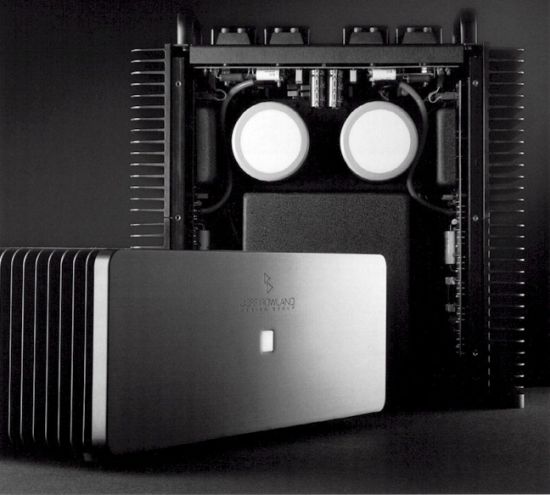
The model 1 can be seen as a more space-efficient, more compact stereo version of the model 3. Inside are similar electronics but there’s less power on tap. These amps have a trick up their sleeve though: they can be converted to monos. Using two of them will drive almost any speakers you care to connect. But please take note: not all model 1’s can be bridged. Apparently some older preduction versions don’t have the bridging option. For example, one with serial number 114x did not have the biwire option. The cutout for the bridging switch is there, but there is no switch installed, and the back of the faceplate does not have labelling for that switch. A model one with serial number 1479 however did have the biwire option.
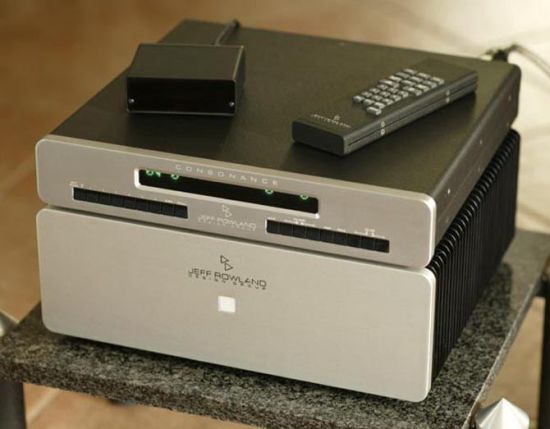
Model 1 shown together with the Consonance preamp. Note the difference in colour on the front panels. This was not unusual: I read that especially the gold finish of the Model 7 was hard to keep consistent from sample to sample. On a more annoying note: the Model 1 is slightly wider than the Consonance! You can see this on the picture above, and I have experienced this with my own Consonance and model 1 too. It’s a difference of a few millimeters and I just wonder why…
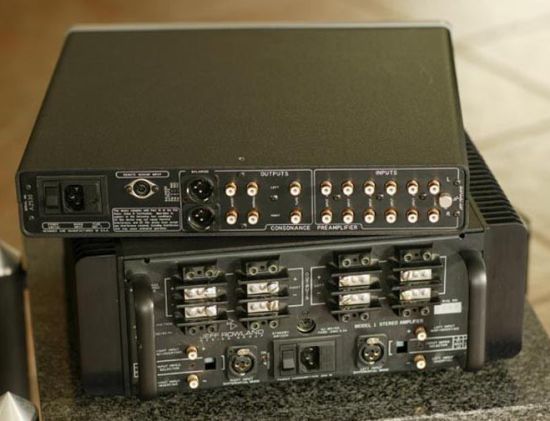
Speaker cable connection is via heavy duty screw strip terminals that are compatible with spades and bare wire only. Bananas do not apply.
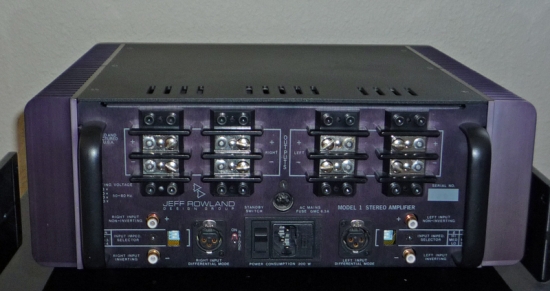
More about JRDG Speaker Binding Posts
I’ve owned a model 1 amp myself and compared it to the model 2 and the mono sixes. The 1 is a warm, fluid and mellow sounding amp with extremely velvety highs and a fat, deep bass. Especially symphonic music sounded incredibly lifelike: you could hear the wood and the music was real and live and the louder you play the better it gets! Ultimately though it lacks the resolution and transparency, as well as the upbeat pacing that the model 2 and model 6 have on offer.
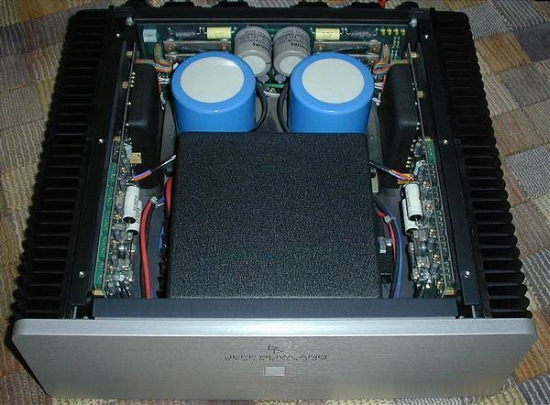
As with its bigger brothers, it seems that there were different versions of the model 1. Above there are two caps on the back panel circuitboard, below there are a multitude. This is likely no repair work as that would involve making new holes in the print. The big caps are mostly grey but I have seen various model 1’s with blue caps too, so that may indicate a version difference, or it may point to repair work.
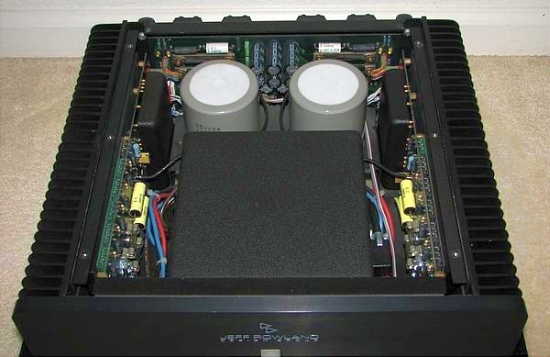
Model 1 Features
Lack of overall or nested negative feedback eliminates time domain distortion.
Proprietary distortion canceling techniques minimize amplitude related distortions.
Each transistor individually tested and matched for optimum operating characteristics.
Constant output impedance is maintained over the entire audio range, allowing for universal compatibility with associated equipment.
The large number of high-speed bipolar output transistors provides uncompromising reliability and eliminates the need for electronic protection circuitry.
A single voltage amplification stage utilizes field effect transistors (operating intransconductance mode), which increases low-level signal recognition.
The absence of capacitors, inductors, fuses and protection circuitry throughout the signal path eliminates the adverse effects of these devices.
A specially designed toroidal power transformer is supported by the substantial output stage capability.
All critical circuitry is encapsulated in a thermally-conductive epoxy to ensure stability.
Model 1 Technical Specifications
Output power
60 watts RMS continuous, 8 ohms
120 watts RMS continuous, 4 ohms
215 watts RMS continuous, 2 ohms
Power Bandwidth
0.3 Hz to 300 kHz, -3 dB
Slew Rate
70 volts per microsecond
THD and Noise
Less than .025%, 1 kHz, 8 ohms, 20 watts
Less than .035%, 1 kHz, 8 ohms, 60 watts
Damping Factor
Greater than 200, 20 Hz to 20 kHz, 8 ohms
Greater than 85 100 kHz, 8 ohms
Output Current
22 amps peak, continuous
55 amps peak, 0.1 ohm, 20 msec, 1 kHz
Overall Gain
Selectable: 20, 26, 29.5, 32 dB
Sensitivity
136 mV, 1 watt, 8 ohms
Input Impedance
Selectable: 100k, 20k,
More Jeff Rowland
Jeff Rowland Company Special Main Page
Jeff Rowland Company Special Power Amplifiers
Hi Christaan,i am looking for these amps,i have 3.7 magnepan and use a moscode401hr.Do you think this will be a better combo as my 325w at 4ohm Moscode?Best regards Rik
Hi Rik, I have never heard the Moscode so can’t really comment. What I can say is that the JRDG model 1 is getting really old and I never found it to sound anywhere near as good as the later model 2 or model 6. The model 1 has an exceedingly warm, thick, and smooth sound and it can sound a little slow (or relaxed and unforced, depending on your views).
Okay thanx
That is not how my Moscode401hr sounds it is sounding very open detailed and fast,but it is not a amp who can deliver as much current as the JR.
I see, but current is only one of the variables. Honestly, I would go for the model 2 instead.
Yes i will thank you for your comment!
For the record, Jeff has a new (2022) upgrade for the Model One amplifier, which completely improves the sound, while retaining its original character.
He charges $550 for the upgrade, which is a great deal, as he also cleans and checks the unit.
That’s very nice extra info, thanks for sharing!
Any comments as to what changes Jeff makes for the improvements to the Model 1? Changing the frequency compensation might be one way to acheive what you mentioned ….
I think you should contact JRDG and ask Jeff directly… he’ll go as deep as you’d like! :))